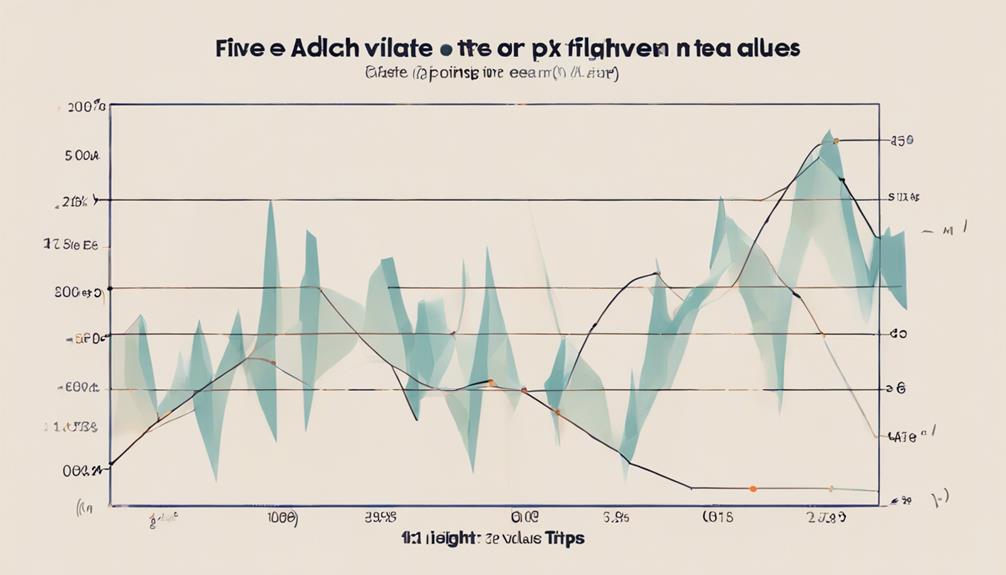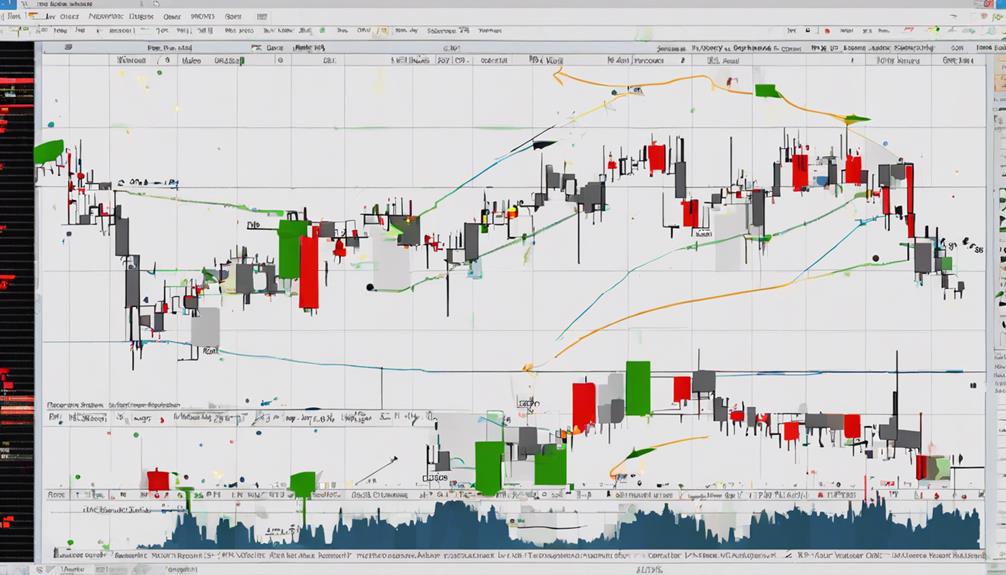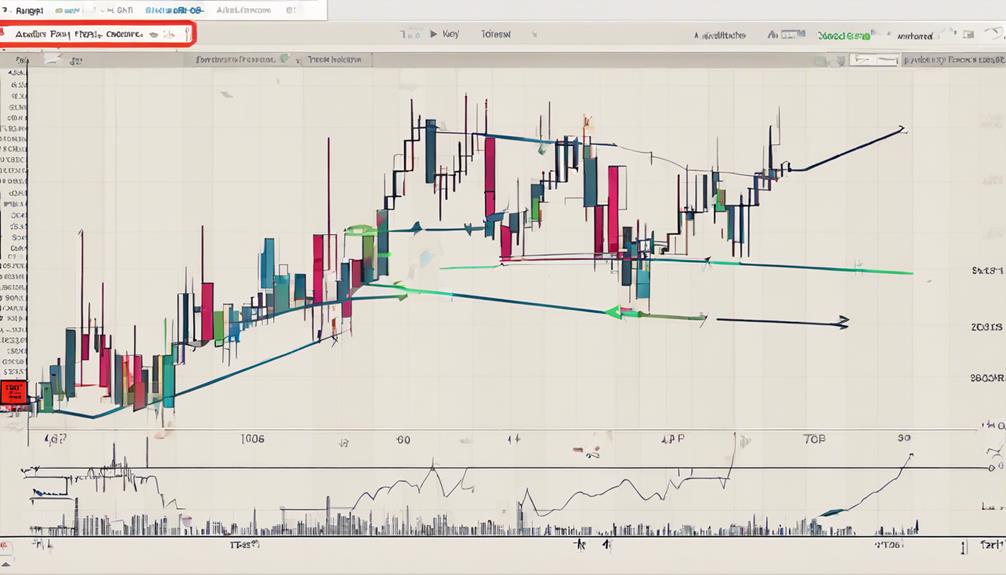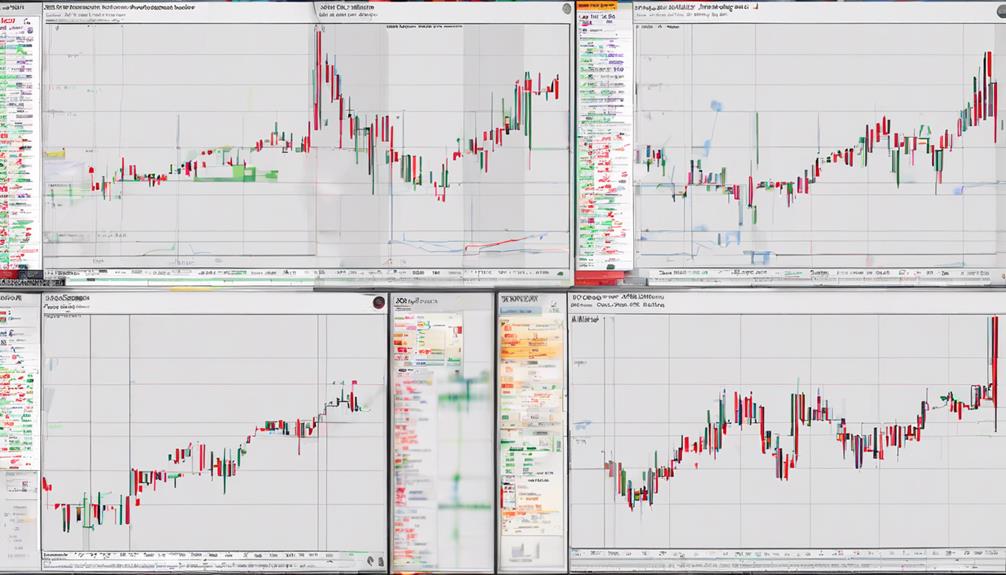Decoding the ADX Indicator can significantly enhance one's trading acumen. By grasping the intricacies of this powerful tool, traders can gain valuable insights into market trends and make informed decisions.
However, merely understanding the basics is not enough. To truly unlock the potential of the ADX Indicator, traders must delve deeper into its nuances and uncover the top 5 tips that can revolutionize their trading strategies.
Whether you're a novice or seasoned trader, mastering these tips could be the key to unlocking greater success in the dynamic world of trading.
Understanding ADX Calculation
The ADX calculation, averaging directional movement across a specific timeframe, typically 14 bars, is a fundamental method for quantifying trend strength in financial markets. By analyzing the difference between high and low prices over this period, the ADX indicator quantifies the strength of trends without providing directional information. This allows traders to focus solely on the intensity of market trends, aiding in making effective decisions.
Traders use the ADX calculation as a tool for market trend analysis. ADX values range from 0 to 100, with higher values indicating stronger trends. Understanding the ADX calculation helps traders gauge the potency of market trends, enabling them to adapt their strategies accordingly. By assessing the strength of trends through the ADX indicator, traders can make informed decisions on entry and exit points, risk management, and overall market participation. This analytical approach to trend strength evaluation is crucial for traders seeking to navigate the complexities of financial markets effectively.
Interpreting ADX Values

How can ADX values be effectively interpreted to assess market trend strength?
The ADX indicator provides traders with valuable insights into the strength of a trend in the market. ADX values range from 0 to 100, with readings above 25 indicating a strong trend. When the ADX value is below 25, it suggests weak trend conditions or a non-trading period. Very weak trends or consolidation phases are typically associated with ADX values below 20. Strong trends are confirmed by ADX values above 40, indicating a robust trend in the market.
Traders can utilize ADX values to identify potential trend changes or reversals. Rising ADX values can signal that a strong trend is losing momentum, potentially leading to a reversal or a change in trend direction. By monitoring ADX values alongside other technical indicators, traders can make informed decisions about market trends and adjust their trading strategies accordingly. Understanding how to interpret ADX values is crucial for traders looking to navigate various market conditions effectively.
Incorporating ADX in Trading Strategies

Integrating the ADX indicator into trading strategies alongside complementary technical tools can enhance trend analysis and decision-making processes for traders seeking to optimize their market performance. The ADX, or Average Directional Index, is a key momentum indicator that can be used to gauge the strength of a trend. When used in conjunction with other technical indicators such as the Relative Strength Index (RSI) or moving averages, traders can develop more robust trading strategies.
Understanding ADX values above 25 can signal strong trends, providing opportunities for profitable trades. Conversely, ADX values below 20 indicate weak trends or consolidation, prompting caution for trend-based strategies. By analyzing the ADX line in relation to price action, traders can gain valuable insights into trend strength and potential reversals, aiding in more informed decisions regarding market trends and optimal entry/exit points.
Incorporating ADX in trading strategies can significantly improve overall trading performance by enhancing trend analysis and strategic decision-making processes.
Practical Tips for Using ADX

Building on the importance of interpreting ADX values for trend analysis, practical tips for effectively utilizing the ADX indicator in trading strategies can greatly enhance decision-making processes for traders seeking to optimize market performance.
When incorporating the ADX indicator into trading strategies, consider the following:
- Combine with Moving Averages: Pairing the ADX indicator with moving averages can help confirm trend direction. When the ADX value is rising along with a moving average crossover, it can indicate a strong trend.
- Wait for Confirmation Signals: It is advisable to wait for confirmation signals from the ADX before entering trades. A breakout supported by a rising ADX above 25 is more likely to result in a sustained trend.
- Use ADX for Forex Trading: In forex trading, the ADX serves as a valuable tool for assessing trend strength and identifying potential entry and exit points. Traders can leverage ADX values to gauge the strength of a trend and make informed decisions based on price action.
Advanced Analysis With ADX

Employing advanced techniques for analyzing trend strength and market dynamics, the ADX indicator serves as a valuable technical analysis tool for traders seeking to navigate market volatility.
By incorporating the ADX line into their analysis, traders can gauge the strength of a trend, with values above 25 indicating a strong trend and values below 20 suggesting weak trends or consolidation.
The ADX indicator is often used in conjunction with the directional movement indicator (+DI and -DI lines) to assess trend momentum and direction. Traders can leverage the ADX indicator in developing an ADX day trading strategy, where rising ADX values may signal potential trend changes or reversals, aiding in identifying optimal entry and exit points.
Understanding the ADX's insights into trend strength can provide traders with a competitive edge in interpreting market dynamics and making informed trading decisions based on robust trend analysis.
What Are the Top Tips for Decoding the ADX Indicator?
When it comes to decoding the ADX indicator, the best steps to initiate with ADX indicator can make a difference. Understanding the trend strength and potential price reversals can be achieved by focusing on key levels and interpreting crossovers. Using multiple timeframes can also provide a clearer picture of market trends.
Frequently Asked Questions
How Do You Interpret the ADX Indicator?
Interpreting the ADX indicator involves assessing trend strength. ADX values above 25 indicate a strong trend, below 20 suggest weakness. Rising ADX signifies increasing trend strength, falling levels signal potential trend weakening. ADX assists in analyzing trend direction and momentum.
What Are the Best Settings for ADX Indicator?
Optimal ADX indicator settings vary based on trading strategies. A 14-period default suits many, while day traders prefer 3 periods and swing traders opt for 25-30 periods. Adjusting settings to match time frames and combining with other tools can enhance trading accuracy.
What Is the Best Combination Indicator With Adx?
The Moving Average Convergence Divergence (MACD) is a prominent indicator that, when combined with the ADX, enhances trend analysis accuracy and trading decisions. MACD's crossover signals can complement ADX's trend strength readings for improved outcomes.
What ADX Setting for 5 Minute Chart?
For a 5-minute chart, the recommended ADX setting is typically 14 periods. This setting aids traders in assessing trend strength within shorter time frames, enabling the identification of short-term trends and potential trading opportunities based on ADX values above 25.
Conclusion
In conclusion, mastering the ADX Indicator is crucial for traders looking to gauge market trend strength and make informed decisions. By understanding ADX calculation, interpreting values, incorporating it in trading strategies, and utilizing practical tips, traders can enhance their trading success.
Advanced analysis with ADX can further improve decision-making processes. The ADX Indicator is like a compass guiding traders through the complex terrain of the financial markets, providing clarity and direction in their trading journey.
